‘A Star Chamber affair’: the death of Timothy Coughlan (3:1)
Published in 18th–19th - Century History, 20th-century / Contemporary History, Features, Issue 1 (Spring 1995), Volume 3Gabriel Doherty
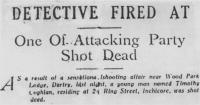
Sunday Independent, 26 January 1928.
It is a dry, frosty January night in Dublin. Suddenly the silence of a suburban street is shattered by the sound of automatic gunfire: it appears that an IRA man has been shot dead while attempting to assassinate a police detective as he returns home from work.
However, the situation turns more sinister when it is announced at the subsequent inquest that not only was the dead man (literally) a card-carrying member of a shadowy republican political organisation, but that he had been shot in the back of the head. Moreover, his intended ‘victim’ was not a police officer, but an informer. Conflicting reports from eye-witnesses soon add to the growing controversy; there is talk of police complicity in the killing, and of an official cover-up, talk which is not silenced by an immediate public investigation and subsequent report.
Fragile pax Hibernica
The circumstances surrounding the controversial death of Timothy Coughlan in 1928 outside the Dartry Road home of ‘intelligence officer’ Seán Harling are instructive not only for the light they shed on the fragile nature of the post-Civil War pax Hibernica, but also because they exemplify the intractably personal dimension of the difficulties faced by any society in the aftermath of civil unrest.
The political atmosphere of the time was very tense, following the split in Sinn Féin and subsequent foundation of Fianna Fáil in 1926, and the latter’s entry into the Dáil in the following year, a move which served to intensify the already vitriolic nature of political dialogue. The security situation was, if anything, even worse. The assassination of Kevin O’Higgins in July 1927 and the subsequent enactment of the Public Safety and Electoral Amendment Bills in the same year raised once more the spectre of civil strife. And while the country was mercifully spared the mayhem of 1922-3, the developments added new urgency to the on-going secret war between the forces of the Gárda Síochána on one side and the Irish Republican Army on the other.
Conor Brady has painted a vivid portrait of these years from the police perspective in Guardians of the Peace, the standard history of the force. A necessary rationalisation of resources had already taken place, most notably the sublimation of the old Oriel House CID (whose frequently illegal methods were an increasing embarrassment to a government determined to present the facade of normality) into the detective branch of the Dublin Metropolitan Police. The process culminated in the merger of the DMP and the Gardaí under the terms of the Police Forces Amalgamation Bill of February 1925, which for the first time created a single police force for the whole of the state. The detective branch was subsequently split into two sections, Crime Ordinary and Crime Special, and it was with the latter of these (the armed and motorised ‘Special Branch’), that the personal fortunes of Seán Harling were to be inextricably bound.
This renewed sense of purpose on the part of the police contrasted sharply with an air of demoralisation in the republican camp. The divisions between the ‘political’ and ‘military’ wings, which had surfaced so disastrously at the Army Convention of November 1925, the further dissipation of energies in the abstentionist debate, the decline in American funds, and a series of unsuccessful armed actions, seemed to presage inevitable defeat. The only available means of reversing this cycle of decline seemed to be a return to the tried and tested methods of 1919-21, of ruthless young men ‘taking-out’ their police tormentors as coldly as possible, and it is at this point that Timothy Coughlan enters our story.
Although a mere twenty-two years of age Coughlan was an experienced figure within the ranks of the Dublin IRA. The second eldest of a family of nine, he was living with his parents in Inchicore at the time of his death. He had played an active role in the Anglo-Irish war and had opted for the republican side after the Treaty split, being interned at the Curragh in 1922-3. Upon his release he re-immersed himself in the republican movement, and, together with Archie Doyle and Bill Gannon, was a member of the IRA unit which assassinated Kevin O’Higgins. Although never charged with the offence, he was henceforth a prime police target, and it was this fact more than any other which helped stoke the flames of suspicion after his death.
It is, however, Seán Harling, who better personifies the complex weaving of individual and national histories during these years. Born in May 1902, he too had been involved in the independence struggle, (serving in the Secretariat of the First Dáil) and had, if anything, been even more prominent than Coughlan in the republican movement thereafter. As a consequence of his known sympathies with the ‘Irregulars’ he was arrested in August 1922 and interned until February 1924. Although erroneously described after his death as the first aide-de-camp to de Valera, he was nonetheless a very prominent figure in Fianna Éireann, and was a close associate of Constance Markiewicz in the years preceding her death in July 1927.
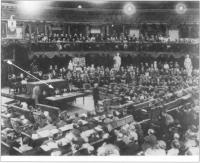
Sean Harling (arrowed) served in the secretariat of the First Dail.
Agent provocateur
It is at this point that his activities took on an altogether different aspect. As far back as June 1926 he had been corresponding with Diarmuid O’Hegarty, Secretary to the Executive Council, requesting financial assistance for his family. Harling later admitted that it was at this time that he began working for the police as an agent provocateur. His brief was a wide one, covering theft (organising, for example, a break-in at the Fianna Éireann headquarters in Drury Street), the establishment of extreme republican splinter groups, incitements to attack ‘Baden-Powell halls’, and old-fashioned ‘grassing’. Indeed, for a few days he even managed to gain an official position within Fianna Fáil. It is clear that a decision was taken to recruit Harling as a ‘mole’ in the republican network, work for which his apparently impeccable nationalist credentials in the past, and his present straightened economic circumstances (his wife had recently become pregnant with their first child), appeared to make him a suitable and likely candidate.
And thus we come to the evening of 28 January 1928. As was to be expected the events of the evening were the subject of dispute, with eye-witness accounts differing markedly in important respects. This was the official verdict of the tribunal of inquiry:
…the Tribunal are satisfied that Timothy Coughlan referred to in the Order of the Minister for Justice dated the 15th day of February, 1928 [for which see below], was killed by a bullet fired by Seán Harling from a Webley .45 revolver and that Seán Harling fired that shot on an occasion when he was being attacked by Timothy Coughlan and another man, and that this shot was fired by Harling, after shots had been fired at him with intent to kill by Timothy Coughlan.
This conclusion endorsed Harling’s version of events, which was that, while walking along Dartry Road at approximately 6.35pm (having had a lift home from the Detective Office at Pearse Street station), he had become suspicious of two men who appeared to be watching him from the other side of the road. On entering the driveway to his home, Woodpark Lodge, he stated that he was fired upon by the men, who rushed across the road, shooting as they ran. After returning fire he retreated to his porch door, and fired one more shot at one of his pursuers who had followed him around the gate, before he himself backed into the house (see map A). After a short period, he looked out to see a man lying a few yards away, suffering from grievous head injuries. The dying man was carried inside, and was identified from a Fianna Fáil membership card found on his person as Timothy Coughlan. Within the hour he was pronounced dead, upon arrival at the Meath Hospital.
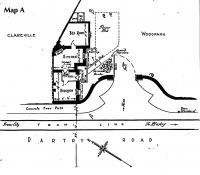 Incongruities
Incongruities
In fact, on the balance of the available evidence, the verdict was probably the safest, if also the most anodyne, finding that the tribunal could have returned. However, there were a number of incongruities in the suggestion that Coughlan and his accomplice (who was never found but who was probably his neighbour and fellow IRA man, Archie Doyle) were deadly assassins, engaged in an expertly-planned ambush:
• It was by no means certain that Harling was to arrive at Woodpark Lodge at the time he did. He had been given a lift home and consequently arrived rather early, thereby introducing an unwelcome element of uncertainty into the timing of any ambush.
• There were apparently only two attackers, whereas three or more would have been considered the norm on such an operation. The consequence of this was that there was no
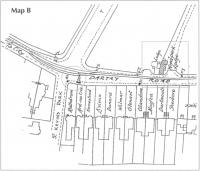 means of escape from the scene other than on foot.
means of escape from the scene other than on foot.
• According to Harling’s own testimony the two men had been sitting under a street lamp (circled in map B) a hundred yards away from his home. They could easily have found a location which was less exposed for their wait, and more suitable for the prospective attack—particularly given the fact that the road was only lit along the side of the road opposite Woodpark Lodge .
• The attack came early in the evening, when there were several witnesses in the vicinity.
Of course it may well have been that the operation was simply botched, but subsequent events seemed to point in a different direction.
The Sunday newspapers were, naturally, full of news of the incident, which drew large crowds of onlookers to the area. What really excited public interest, however, was the finding of the inquest into the death, held on the following Monday under the direction of Louis Byrne, Dublin City Coroner. The ten-man jury returned the following verdict:
We find that the said Timothy Coughlan died on the 28th instant from shock, haemorrhage and laceration of the brain caused by a bullet. We are of the opinion that the circumstances of the case should be a matter of further investigation.
This rider was based on three sensational pieces of news, supplied by Dr Wilfred Lane of the Meath Hospital, who carried out the post mortem on Coughlan. Firstly he stated that, given the nature of the head wounds, Coughlan had clearly been shot in the back of the head. Secondly, there was evidence of ‘an independent horizontal fracture’ of the skull, which, he suggested, might have been caused by the violent impact of a sand bag. Thirdly, he found the remnants of a cigarette between Coughlan’s lips, a discovery incompatible with Harling’s description of Coughlan’s frantic pursuit. Such revelations, combined with Harling’s refusal to disclose the nature of his police activities, raised the disturbing spectre of police murder.
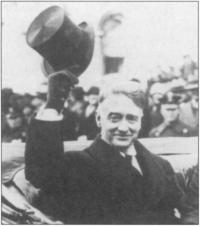
W.T. Cosgrave
‘Was Timothy Coughlan murdered?’
The political sensitivity of the case was dramatically heightened with the appearance the following Saturday of an article by Seán McEntee in the Fianna Fáil organ, The Nation. It followed four days after Coughlan’s burial with full republican military honours, a service which attracted representatives from several republican organisations together with a smattering of Fianna Fáil TDs. The tone of McEntee’s piece was evident from its title: ‘Was Timothy Coughlan murdered?’ In it he delivered a withering broadside on the role of the police and the government in the affair. Referring to the inquest’s findings, he queried how Coughlan could have kept a cigarette between his lips when his pursuit was so ‘close, hot and relentless’? On the issue of the bullet wound he stated that, ‘we are not so credulous as to believe that a bullet fired at the face of a pursuer follows a parabolic trajectory so as to enter at the base of the skull’. Finally, he pointed out that the ‘independent horizontal fracture’ of the skull was located on the left hand side, whereas, judging by the marks on his clothing, Coughlan appeared to have fallen to his right. The inference seemed unavoidable: Coughlan had been beaten either before or after being shot.
The government had, however, already taken steps to investigate the matter—after a fashion. In Brady’s words:
On the day after the shooting Cosgrave sent for O’Duffy and Neligan and demanded an explanation of the strange events in Dartry Road. He had had enough, he explained to the two police chiefs, of complaints and allegations against the detective branch and the Garda Síochána. There were limits beyond which the government was not prepared to allow them to go in dealing with the IRA. Neligan began to explain that Harling was in fact a bona fide police agent who had merely been defending himself—as he was entitled to do—and who had fortunately shot his prospective assassin before he himself had been shot. ‘Do you mean we have nothing to hide?’ asked Cosgrave, taken aback. ‘Not a thing,’ replied Neligan. ‘Splendid,’ said Cosgrave joyfully. ‘In that case we’ll have an enquiry.’
The rider returned at the inquest, together with McEntee’s allegations, gave added urgency to the government’s course of action. Following a discussion on 10 February, the Executive Council decided to set up an inquiry under the terms of section 1 (1) of the Tribunals of Enquiry (Evidence) Act of 1921. With regard to the personnel of the tribunal, the initial recommendation was to appoint two senior judges, but the nominations were altered at an informal cabinet meeting on 14 February, and the names of three lesser district justices substituted instead.
Tribunal of Enquiry
The Act required the passage of a supporting motion in both houses of the Oireachtas, and the acrimonious nature of the associated Dáil debate on 15 February did little to diminish the controversy surrounding the affair. A Fianna Fáil amendment to the motion, which sought to have the method of investigation altered from a tribunal to a five-man Dáil select committee, was defeated principally because, as Captain Redmond put it: ‘it would not be possible to get an impartial committee of five members of this Dáil’. The government also succeeded in restricting the tribunal’s terms of reference so as to exclude an examination of police recruitment methods, again much to the chagrin of Fianna Fáil. Indeed, the Minister for Justice, James Fitzgerald-Kenney, made no attempt to hide the fact that he had already made up his mind as to Harling’s innocence (which explained why, contrary to normal practice in such a shooting, Harling remained a free man). In spite of obvious opposition disquiet the government succeeded in getting its motion through both Dáil and Senate with substantial majorities.
The tribunal itself was, by present-day standards, a brief affair, convening for the first time on 27 February at City Hall, with the final report being submitted on 14 April. Forty six witnesses were called over eight days of public testimony, with counsel being retained for Harling, the Gárdaí, Coughlan’s next-of-kin, and Fianna Fáil. In truth, the event was rather pedestrian in nature, the proceedings being enlivened only by an occasional sharp exchange between counsel, and the revelation that one of the witnesses had been associated with a prosecution under the White Slave Traffic Acts. However, the following important developments did take place:
• After complaints from Messrs O’Connor and Maguire (counsel for the Coughlan family and Fianna Fáil respectively), the Chief State Solicitor, who at the outset of the inquiry was instructing counsel for both Harling and the Gardaí, had his retainer for the former discharged, on the basis that this dual role represented a potential conflict of interest.
• As at the inquest, Harling refused to answer questions as to the time of his ‘recruitment’ into police service. In order to secure this claim of official privilege, it was necessary for Henry O’Friel, Secretary and Principal Officer at the Department of Justice, to appear at the tribunal and give this defence of official policy:
…in every civilised country it is recognised that for the purposes of the detection and prevention of crime, a certain amount of Secret Service money is necessary. That is not disputed in any civilised state, and in our State, that is the position also…Once that imprest is issued to the Minister for Justice it is his duty to see that the police force, who are obviously the only force that could reasonably require Secret Service money, in the course of the investigation of crime, get the money…General supervision must be maintained by the Minister, who must also be satisfied that the police officers are trustworthy and responsible men.
On the strength of this claim, Harling was spared the more searching questions as to his modus operandi.
• It transpired that Harling was not the only one in Woodpark Lodge that night with a known republican past. By marrying Norah Redican he had, in fact, become related to a family whose background in this respect was as noteworthy as his own. Both his mother-in-law and two of his brothers-in-law had convictions related to republican activities, with Private Thomas Redican the focus of particular scrutiny. Arrested and convicted for bank robbery in May 1921, an ex-internee and hunger-striker, the upturn in his personal fortunes coincided with that of Harling’s, and his unexpected presence in military uniform in Woodpark Lodge on the night in question seemed to lend credence to the suggestion that Coughlan may have been struck by a sandbag at the time of his injuries.
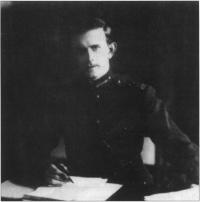
Garda Commissioner Eoin O’Duffy
Inconsistencies in the evidence
As was inevitable, given the confusing circumstances in which the shooting took place, there were inconsistencies in the evidence provided by the witnesses presented by all parties. Thus, there were discrepancies in the accounts with regard to both the sequence and timing of the events, the forensic evidence, the number of shots fired, and the appearance of the assailants. Further, there were descriptions of two men loitering in the immediate area of the Lodge, unexplained deficiencies in the recording of police log books, alleged sightings of police cars and pools of blood along Dartry Road—sufficient loose-ends, indeed, to satisfy the most conspiratorially-minded of government critics.
As noted above, the tribunal endorsed Harling’s account without question. Interestingly, the government decided to release the favourable elements of the report to the press a few days in advance of its official publication and presentation to the Oireachtas, although it suffered little censure for this flagrant breach of protocol. By this stage, however, public interest in the affair had waned substantially (which may well have been the raison d’être of the whole tribunal exercise), and with attention now focused on other pressing domestic matters, the controversy that had initially attended the shooting died away. Indeed the general security situation had improved to such an extent that the Public Safety Act was repealed in December of the same year.
And that appeared to mark the end of the affair. However, a small correspondence survives within the records of the Department of the Taoiseach, which gives us a tantalising glimpse of the workings of the official mind in the aftermath of this unwelcome cause célèbre. In The Secret Army Bowyer Bell tells us that, as soon as he had been exonerated by the tribunal, Harling was given a sum of money to leave the country, which he did. Indeed the next time he comes to view he is writing to Diarmuid O’Hegarty from an address in Kensington, south London, enquiring (as in 1926) into the possibilities of civil service employment. However, he was to discover that, having exhausted his usefulness to the state, his previous employers were not keen on his return to Ireland. Thus O’Friel, who two years previously had publicly testified to Harling’s worth, now opposed his reinstatement on the basis that ‘the police can scarcely be expected to regard Harling’s return as anything but inconvenient’. In fact, Harling returned to Ireland, indeed to Dartry Road, of his own volition a short time afterwards, and, after some lobbying, his case was favourably reviewed by the Civil Service Review Committee. It is intriguing to speculate on what may have lain behind this official change of mind; it certainly seems possible that Harling may have traded his knowledge of police intelligence for personal security. Whatever the reason, he lived the rest of his life out in relative ease as a clerical officer in the Revenue Commissioners, having remarried and moved to New Grange Road, Cabra, before dying peacefully in August 1977.
Conclusion
What significance do the events of his life, and in particular the bloody incident analysed above, have from a contemporary perspective? Partly they demonstrate how difficult it is for an individual, once exposed to the ineluctable utility of violence, to escape its personal consequences. More disturbingly, however, they indicate the official capacity for manipulating the lives of such individuals, and orienting them towards the same violent end, whilst using the machinery of judicial administration and investigation to deny its own culpability. In effect, both Timothy Coughlan and Seán Harling were victims: the former of a youthful and misguided zeal; the latter of the institutional imperative for self-preservation.
Gabriel Doherty lectures in history at University College Cork.
Further reading:
Saorstát Éireann, Coughlan Shooting Inquiry: Report of the Tribunal of Inquiry with minutes of evidence taken before the Tribunal (Dublin 1928).
C. Brady, Guardians of the Peace (Dublin 1974).
D. Keogh, Twentieth Century Ireland (Dublin 1994).
J. Bowyer Bell, The Secret Army (Dublin 1970).
The author wishes to acknowledge the assistance of the following: Gearóid Ó Tuathaigh, Conor Brady, Eunan O’Halpin, Una Higgins O’Malley, Nollaig Ó Gadhra, John Duffy and John Martin.
















